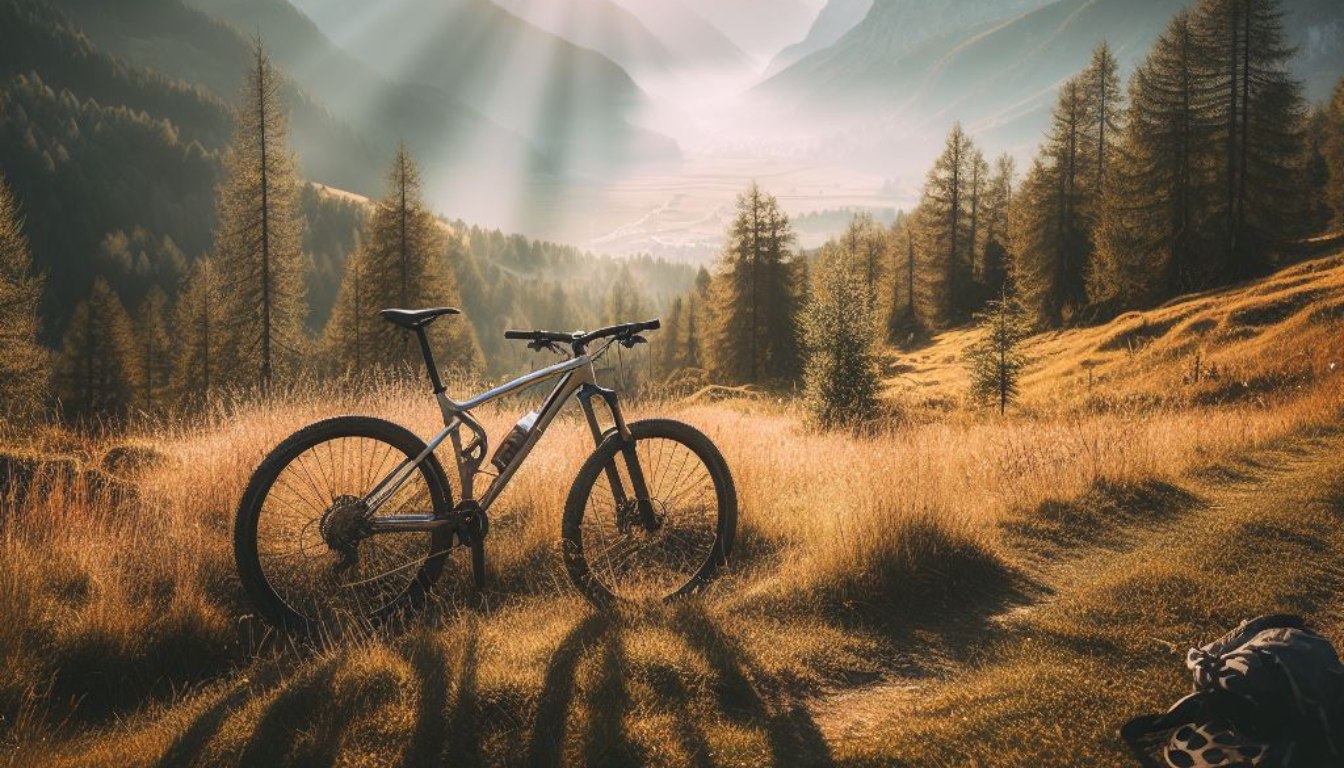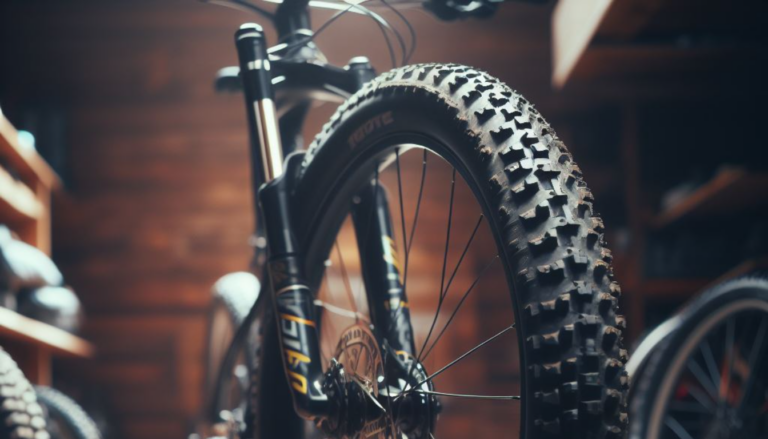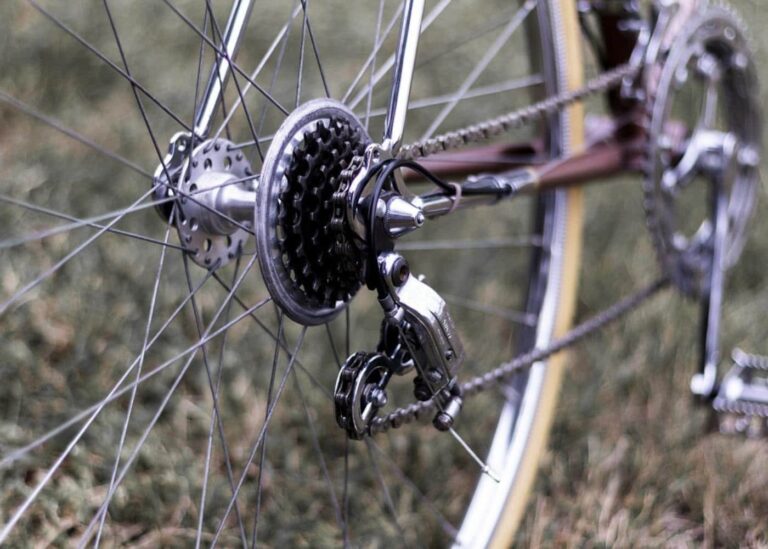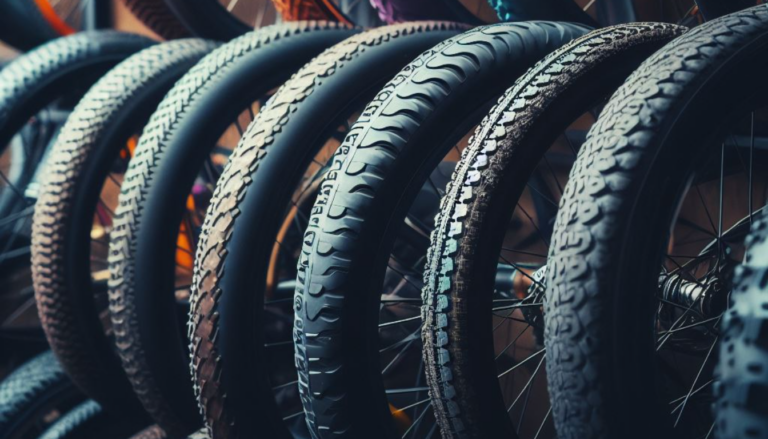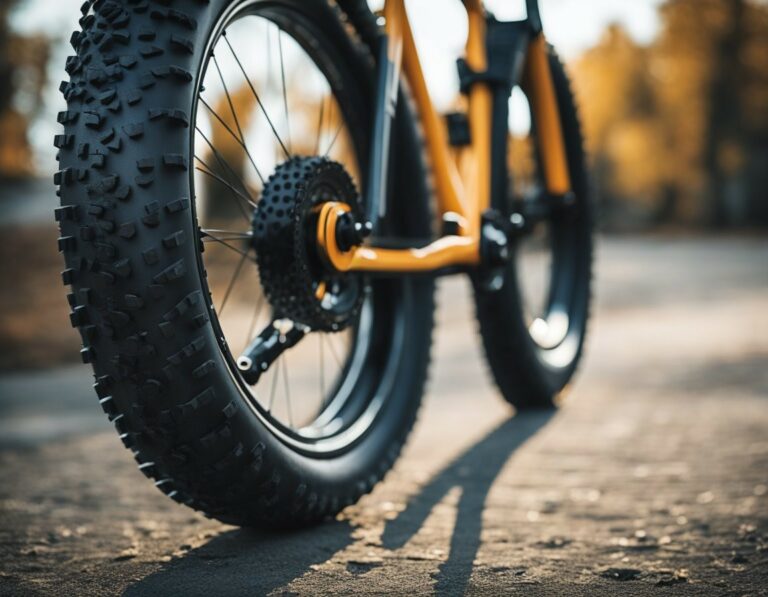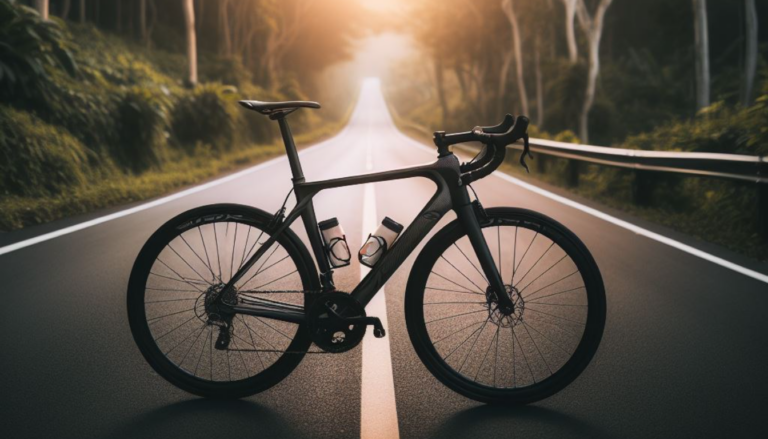Guide to Mountain Bike Tires: Everything You Need to Know
A good mountain bike tire can make the difference between a smooth ride and a bumpy one, and it can also affect your speed, grip, and control on different terrains. When it comes to choosing the right mountain bike tire, there are many factors to consider.
You need to understand:
- the anatomy of a tire
- the different types of tires
- the size and width that fits your bike
- the tread patterns and knob configuration that suit your riding style
- the optimal tire pressure for your weight and terrain.
You also need to know how to maintain and care for your tires, how to repair and prevent punctures, and how to choose the best brands and models for your needs.
Read on to learn all of this and more…
Key Takeaways
- Choosing the right mountain bike tire requires knowledge of anatomy, types, size, tread patterns, and pressure.
- Maintaining and repairing your tires can extend their lifespan and prevent punctures.
- Selecting the best brands and models can enhance your performance and safety on the trails.
Anatomy of a Mountain Bike Tire
Mountain bike tires are the only point of contact between the rider and the ground, making them an essential component of any bike. Understanding the anatomy of a mountain bike tire is important to choosing the right tire for your riding style and terrain.
1. Tread Pattern: The Foundation of Traction
The tread pattern is the most visible part of a tire and provides traction and control. The tread pattern is designed to shed mud, dirt, and water, and to grip the ground. Tread patterns can vary greatly, from closely spaced knobs for hard-packed terrain to widely spaced knobs for muddy conditions.
2. Sidewall: Protection and Performance
The sidewall is the part of the tire that connects the tread to the bead and protects the tire from damage. The sidewall can also affect the performance of the tire, as it can be made of different materials and thicknesses. A thicker sidewall can provide more protection against punctures, but can also make the tire heavier and slower.
3. Bead: Ensuring a Secure Rim Connection
The bead is the part of the tire that connects to the rim and keeps the tire in place. The bead can be made of different materials, such as steel or Kevlar, and can affect the weight and performance of the tire. A secure bead connection is essential to prevent the tire from slipping off the rim during hard cornering or heavy braking.
4. Casing: The Backbone of the Tire
The casing is the foundation of the tire and provides the structure and shape of the tire. The casing can be made of different materials, such as nylon or polyester, and can affect the weight and durability of the tire. A thicker casing can provide more protection against punctures, but can also make the tire heavier and slower.
5. Compound: The Chemistry Behind Grip and Durability
The compound is the material that makes up the tread and affects the grip and durability of the tire. Different compounds can be used for different riding conditions, such as softer compounds for better grip on loose terrain or harder compounds for longer wear on hard-packed terrain.
A mountain bike tire is a complex piece of equipment that requires careful consideration when choosing the right tire for your riding style and terrain. By understanding the anatomy of a mountain bike tire, riders can make informed decisions that will improve their riding experience.
Types of Mountain Bike Tires
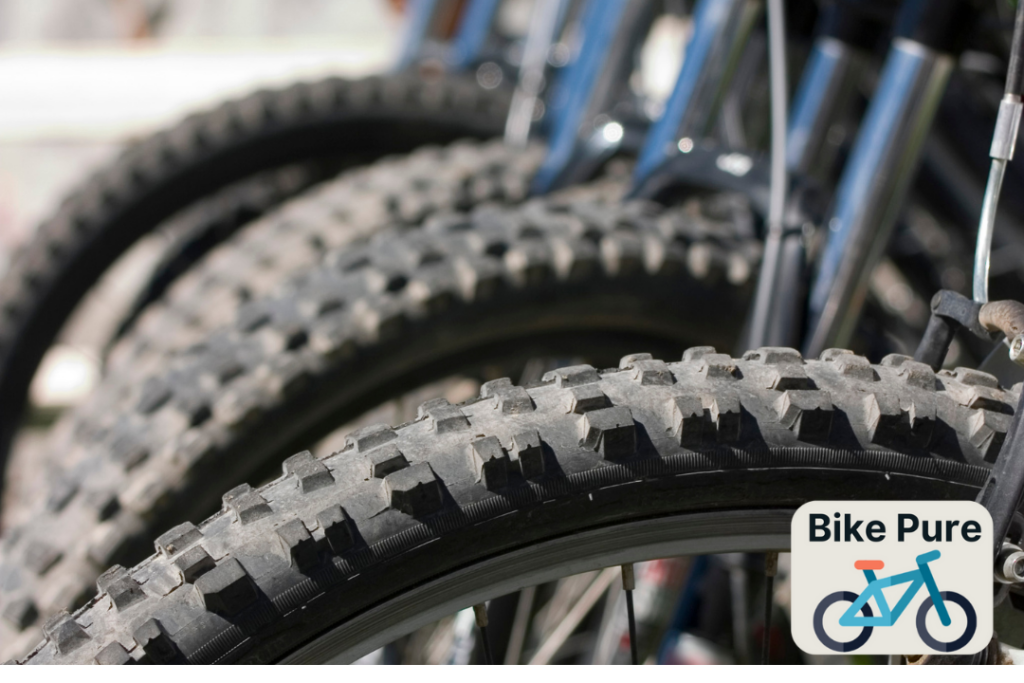
Mountain bike tires come in a variety of types, each with their own strengths and weaknesses. Here are some of the most common types of mountain bike tires:
Clincher Tires: The Traditional Choice
Clincher tires are the most common type of mountain bike tire. They are made with a separate inner tube that is inflated to hold the tire’s shape. Clincher tires are reliable and easy to repair, making them a popular choice for riders who value durability and ease of maintenance.
Tubeless Tires: Modern Innovation for Better Performance
Tubeless tires are a newer type of mountain bike tire that have gained popularity in recent years. They do not require an inner tube, instead relying on a special sealant to keep the tire airtight. Tubeless tires offer better traction and lower rolling resistance than clincher tires, making them a great choice for riders who want to improve their performance.
Tubular Tires: Rare but Relevant
Tubular tires, also known as “sew-up” tires, are a less common type of mountain bike tire. They are similar to clincher tires, but the tire is sewn around the inner tube, creating a single unit. Tubular tires are very lightweight and offer excellent performance, but they are difficult to install and repair, making them a less popular choice for most riders.
Plus-Size Tires: More Cushion and Grip
Plus-size tires are a newer type of mountain bike tire that are wider than traditional tires. They offer more cushion and grip, making them a great choice for riders who want a smoother ride and better traction on rough terrain.
Fat Bike Tires: For Extreme Conditions
Fat bike tires are the widest type of mountain bike tire, designed for use in extreme conditions like snow and sand. They offer excellent flotation and traction, but their large size and weight make them less suitable for everyday use.
There are several types of mountain bike tires to choose from, each with their own strengths and weaknesses. Riders should consider their riding style, terrain, and personal preferences when selecting a tire type.
Tubeless tires are a great choice for riders who want to improve their performance, while clincher tires are a reliable and easy-to-maintain option. Plus-size and fat bike tires offer more cushion and grip for rough terrain and extreme conditions.
Tire Size and Width
Mountain bike tires come in different sizes and widths, and choosing the right ones can greatly affect your riding experience. In this section, we will discuss the differences between tire sizes and widths and how to choose the right ones for your bike.
| Tire Size | Benefits | Considerations |
| 26″ | Agility and responsiveness | Less rollover capability |
| 27.5″ | Balance of agility and rollover | Versatile for various terrains |
| 29″ | Easy rollover, maintains speed | Can be less maneuverable |
Deciphering Tire Size: 26″, 27.5″, and 29″ Differences
Mountain bike tires are commonly available in three different sizes: 26″, 27.5″, and 29″. The tire size refers to the diameter of the tire, with 26″ being the smallest and 29″ being the largest.
The 26″ tire size was the original mountain bike tire size and is still used by some riders today. It is known for its agility and responsiveness, making it a popular choice for technical terrain. However, it may not roll over obstacles as easily as larger tire sizes.
The 27.5″ tire size is a newer option that offers a balance between agility and rollover ability. It is a popular choice for all-mountain and enduro riders who want a versatile tire that can handle a variety of terrain.
The 29″ tire size is the largest option and is known for its ability to roll over obstacles with ease. It is a popular choice for cross-country riders who want a tire that can maintain speed over long distances.
Consider the type of riding you will be doing and your personal preferences. Each tire size has its own advantages and disadvantages, so it is recommended to choose the one that best suits your needs.
Width Wonders: How Width Affects Ride Quality
In addition to tire size, tire width also plays an essential role in your riding experience. Mountain bike tires come in a range of widths, from narrow to wide, with widths typically ranging from 1.8″ to 2.5″.
Narrower tires are typically lighter and faster, making them a popular choice for cross-country riders who want to maintain speed over long distances. However, they may not provide as much traction or stability as wider tires.
Wider tires, on the other hand, are known for their traction and stability, considering the study about tire volume and pressure effects on impact attenuation during mountain bike riding, making them a popular choice for downhill and enduro riders who want a tire that can handle technical terrain. However, they may be heavier and slower than narrower tires.
Consider the type of terrain you will be riding on and your personal preferences. A wider tire may be better for technical terrain, while a narrower tire may be better for maintaining speed over long distances.
Tread Patterns and Knob Configuration
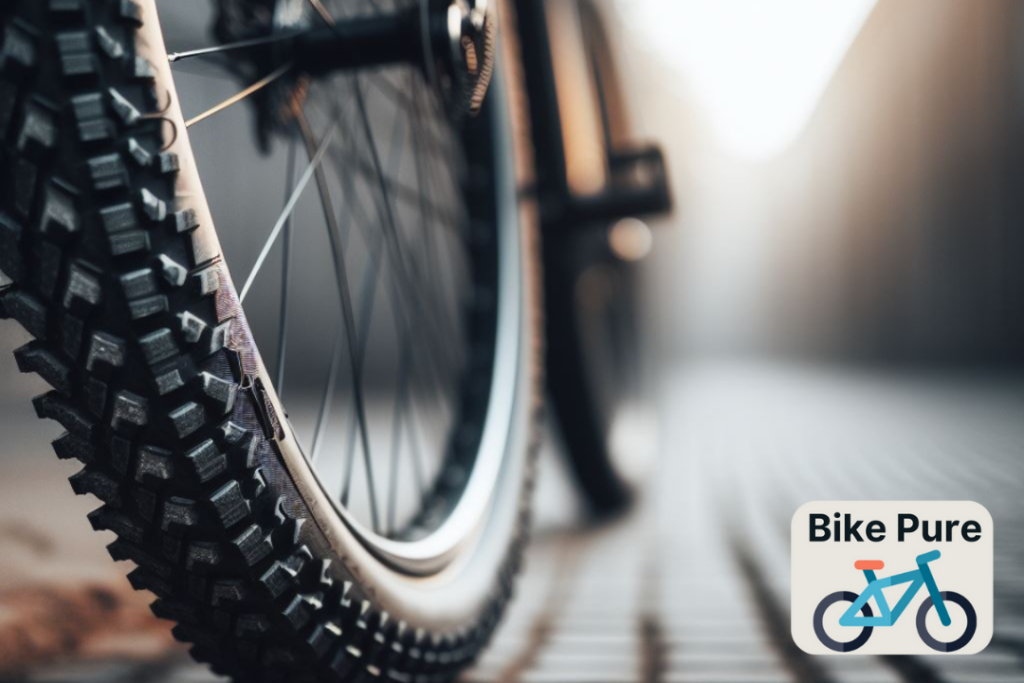
Mountain bike tires come in a variety of tread patterns and knob configurations to suit different riding styles and terrains. The tread pattern and knob configuration of a tire can significantly affect its performance, including grip, rolling resistance, and durability.
The Importance of Tread for Mountain Biking
The tread is an essential component of mountain bike tires. It is responsible for providing traction and grip on various terrains, including loose dirt, rocks, roots, and wet surfaces. A tire with a good tread pattern can provide better control and stability, especially when cornering, braking, or accelerating.
The tread pattern can also affect the rolling resistance of the tire. A tire with a more aggressive tread pattern and larger knobs will have higher rolling resistance than a tire with a smoother tread pattern and smaller knobs. Thus, it is good to choose a tread pattern that suits the rider’s needs and the terrain they will be riding on.
Tread Varieties for Different Disciplines: XC, Trail, Downhill
Different mountain biking disciplines require different tread patterns and knob configurations. Cross-country (XC) riders typically use tires with a smoother tread pattern and smaller knobs to reduce rolling resistance and increase speed. In contrast, trail riders need a tire with a more aggressive tread pattern and larger knobs to provide better grip and control on technical terrain.
Downhill riders require a tire with the most aggressive tread pattern and largest knobs to provide maximum traction and control on steep descents. However, these tires will have the highest rolling resistance and will not perform well on smoother terrain.
Tread compounds are also an essential consideration when choosing a mountain bike tire. Softer compounds provide better grip but wear out faster, while harder compounds last longer but provide less traction. Riders must choose a tread compound that suits their needs and the terrain they will be riding on.
Tire Pressure
Maintaining the right tire pressure is essential for optimal performance and safety while mountain biking. In this section, we will explore the optimal tire pressure for mountain bikes, how to find the right PSI, and the relationship between tire pressure, traction, and comfort.
| Rider Weight | Terrain Type | Recommended PSI |
| Lighter Riders | Rough Terrain | 25-30 PSI |
| Heavier Riders | Smooth Terrain | 35-50 PSI |
| Average Riders | Mixed Terrain | 30-40 PSI |
Pressure Points: Finding the Optimal PSI
Determining the optimal tire pressure for your mountain bike depends on several factors, including rider weight, terrain, and tire size. In general, a lower tire pressure provides better traction and comfort, while a higher tire pressure offers less rolling resistance and better efficiency.
For most mountain bikes, the optimal tire pressure ranges from 30 to 50 PSI. However, it is necessary to check the manufacturer’s recommendations for your specific bike and tires. Over Inflating or underinflating your tires can lead to reduced traction, increased rolling resistance, and even tire damage.
To find the optimal tire pressure for your mountain bike, start by checking the recommended PSI on the sidewall of your tires. Then, adjust the pressure based on your weight and the terrain you will be riding on. A good rule of thumb is to subtract 1 PSI for every 10 pounds of rider weight.
The Relationship Between Tire Pressure, Traction, and Comfort
Tire pressure plays a significant function in determining the level of traction and comfort you experience on your mountain bike. A lower tire pressure provides better traction by increasing the surface area of the tire that contacts the ground. This is particularly important when riding on loose or slippery terrain, as it helps the tire grip the surface and maintain control.
On the other hand, a higher tire pressure offers less rolling resistance and better efficiency. This is ideal for smooth and hard-packed terrain, where traction is less of a concern. However, it can also lead to a harsh and uncomfortable ride, as the tire is less able to absorb bumps and vibrations.
Materials and Construction
Mountain bike tires are made up of several components, including the rubber compound, casing, and puncture protection. Each of these components plays a significant role in determining a tire’s performance attributes.
Rubber Compounds: Balancing Grip and Wear
The rubber compound is the most important component of a mountain bike tire, as it directly affects the tire’s grip and wear characteristics. Mountain bike tires are typically made with a blend of natural and synthetic rubbers that are optimized for specific riding conditions.
Softer rubber compounds offer better grip on loose terrain but wear out faster than harder compounds. Harder rubber compounds, on the other hand, provide better wear characteristics but offer less grip on loose terrain.
Puncture Protection: Technologies Keeping You Riding
Puncture protection is an essential feature of any mountain bike tire, as it helps prevent flats and punctures while riding. There are several puncture protection technologies available, including Kevlar belts, aramid fibers, and various proprietary materials.
Kevlar belts are a popular choice for puncture protection, as they are lightweight and provide excellent protection against cuts and punctures. Aramid fibers, such as those used in Maxxis’ SilkShield technology, offer similar levels of protection but are more expensive.
Casing Options: Weighing Up Performance Attributes
The tire casing is the layer of fabric that sits between the rubber compound and the puncture protection layer. The casing affects the tire’s rolling resistance, durability, and weight.
Tires with a higher thread count casing are generally more supple and offer better rolling resistance, while tires with a lower thread count casing are more durable but have higher rolling resistance.
Mountain bike tires are available in a range of casing options, including single-ply, dual-ply, and various proprietary constructions. Dual-ply tires offer the most protection against cuts and punctures but are heavier and have higher rolling resistance than single-ply tires.
Tire Durability and Lifespan
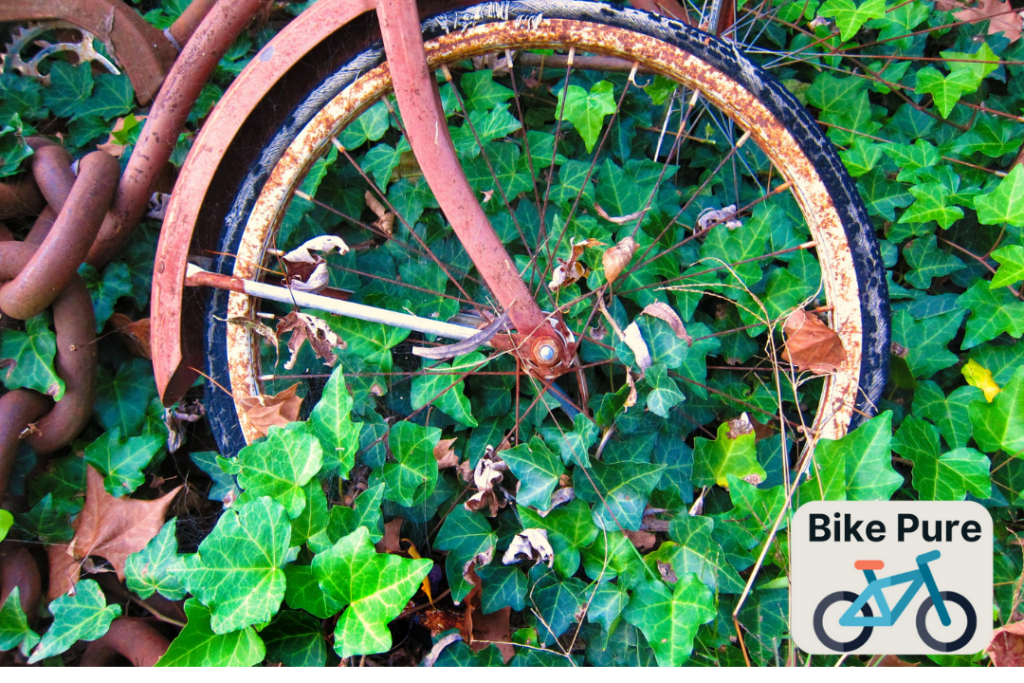
Mountain bike tires are an essential component of any bike, and their durability and lifespan are key factors to consider when selecting the right tire for your bike. In this section, we will discuss tire durability and lifespan, including wear and tear and lifespan factors.
Wear and Tear: When to Replace Your Tires
Tire wear and tear depend on several factors, including the type of terrain you ride on, the frequency of use, and the tire’s construction. Inspect your tires regularly to ensure that they are still in good condition. Here are some signs that your tires need replacing:
- Worn-out tread: When the tread is worn out, the tire loses its grip, making it challenging to ride on wet or loose terrain.
- Cracks and cuts: These can cause the tire to puncture, leading to a flat tire.
- Bulges and bubbles: These are signs of internal damage and can cause the tire to blow out.
Recommendation: Replace your mountain bike tires every 2,000-3,000 miles or every two to three years, depending on usage.
Lifespan Factors: Understanding Tire Longevity
Several factors can impact the lifespan of your mountain bike tires. These include:
- Riding style: Aggressive riders who ride on technical terrain will wear out their tires faster than those who ride on smoother terrain.
- Tire construction: Tires with high-quality materials and construction will last longer than those with lower quality materials.
- Tire pressure: Overinflated or underinflated tires can cause premature wear and tear.
- Storage: Tires that are stored in a cool, dry place away from direct sunlight will last longer than those that are stored in a damp or hot area.
To extend the lifespan of your mountain bike tires, it is necessary to maintain proper tire pressure, inspect your tires regularly, and store them correctly.
Performance Factors
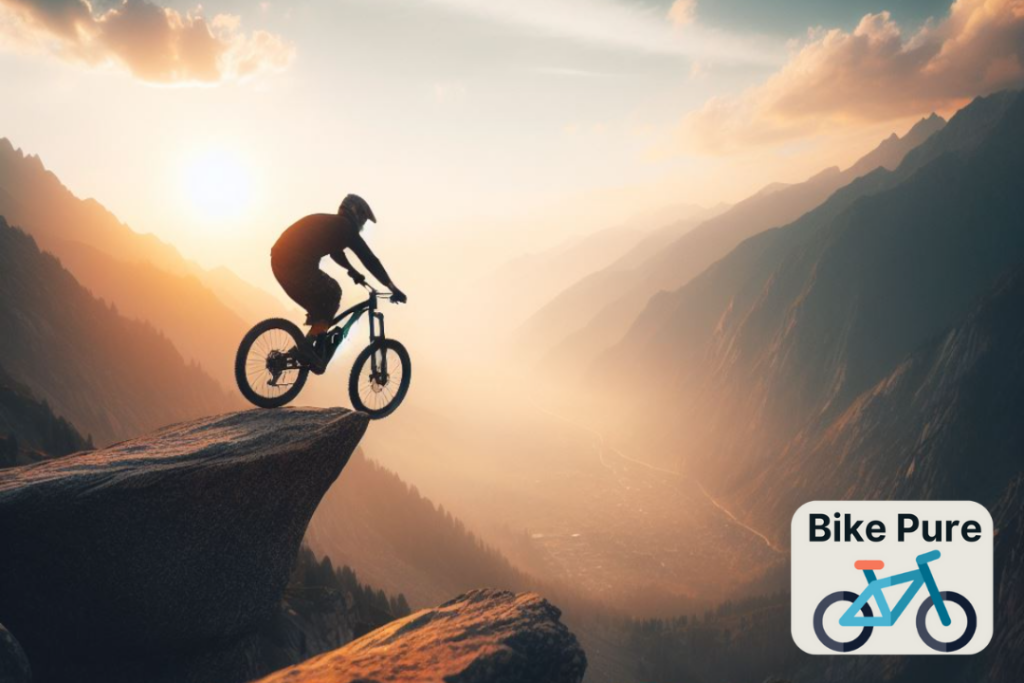
When it comes to mountain biking, tire performance is paramount. Several factors affect the overall performance of mountain bike tires, including rolling resistance, tire weight, and aerodynamics. Understanding the dynamics of mountain biking, especially during large excursion maneuvers, is essential for both novice and experienced riders to improve performance and safety
The Role of Rolling Resistance in Mountain Biking
Rolling resistance is the force that opposes the forward motion of the bike. It is the resistance that the tire generates as it rolls on the ground. The higher the rolling resistance, the more effort the rider has to put in to maintain speed. Choose tires with low rolling resistance for optimal performance.
Note that tires with low rolling resistance may not provide the necessary traction needed for technical terrain.
The Impact of Tire Weight on Riding
The weight of the tire affects the overall performance of the bike. Heavy tires require more effort to accelerate, and they also increase the overall weight of the bike. This can be a significant disadvantage, especially when climbing.
Lightweight tires offer better acceleration and make it easier to climb hills. Ensure that the tires are not too light as this may compromise their durability and puncture resistance.
Aerodynamics: A Minor but Mentionable Factor
Aerodynamics is a minor factor that affects the performance of mountain bike tires. It refers to the ability of the tire to cut through the air and reduce drag. Although it is not as significant as rolling resistance or tire weight, it can still have an impact on the overall performance of the bike.
Mountain bike tires with a streamlined profile and a smooth surface reduce drag and improve aerodynamics. Note that aerodynamics is only a minor factor in mountain biking, and it should not be the primary consideration when choosing tires.
Maintenance and Care
Keeping Tires in Top Condition: Maintenance Tips
Mountain bike tires can take a beating, so it’s best to keep them in good condition. Here are some tips to help you maintain your mountain bike tires:
- Check tire pressure regularly: Maintaining the proper tire pressure makes the bike roll most efficiently. More importantly, it helps prevent flats and rim damage. At least every other ride for road bikes or once a week for mountain bikes, check the tire pressure. The recommended pressure range for mountain bike tires is between 25 and 35 psi. Thinner tires require higher pressure while wider tires require lower pressure.
- Inspect the tire tread: Recent studies have shown that tire tread knobs and inflation pressure play a significant role in the performance of mountain bike tires, with different sizes and types offering varying results. The tread pattern should be even across the tire and there should be no cracks or cuts in the rubber. If the tread is worn, it’s time to replace the tire.
- Clean the tires: Dirt, mud, and debris can get stuck in the tire tread, which can cause damage to the tire. After a ride, use a soft brush and water to clean the tires. Dry the tires thoroughly after cleaning.
- Avoid skidding: Skidding can wear out the tire tread quickly and cause damage to the tire. To avoid skidding, use the brakes to slow down instead of locking up the rear wheel.
Storage Solutions: Preserving Your Tires Off-Season
When the off-season comes around, you should properly store your mountain bike tires to ensure they are in good condition when you’re ready to ride again. Here are some tips for storing your mountain bike tires:
- Clean the tires: Before storing your mountain bike tires, clean them thoroughly with water and a soft brush. Dry them completely before storing.
- Store in a cool, dry place: Store your mountain bike tires in a cool, dry place away from direct sunlight. Sunlight can cause the rubber to dry out and crack.
- Hang the tires: Hanging the tires is a great way to save space and prevent damage. Use hooks or a tire rack to hang the tires vertically.
- Rotate the tires: If you have multiple sets of tires, rotate them regularly. This will help prevent flat spots and ensure they wear evenly.
You can help extend the life of your mountain bike tires and keep them in top condition for your next ride by following these maintenance and storage tips.
Puncture Repair and Prevention
Mountain biking can be an unpredictable sport, and flat tires are a common occurrence. Knowing how to repair a puncture quickly and efficiently can save valuable time on the trail. Taking steps to prevent punctures can help minimize the risk of flats altogether.
Trailside Tactics: Fixing Flats Fast
When a flat tire occurs on the trail, a rider should have the necessary tools and knowledge to fix it quickly. The following steps can help get a rider back on the trail as soon as possible:
- Remove the wheel from the bike and take out the inner tube.
- Locate the puncture by inflating the tube and listening for the escaping air or submerging it in water and looking for bubbles.
- Use a patch kit or replace the damaged tube with a spare.
- Reinstall the wheel and inflate the tire to the recommended pressure.
Note that patching a tube is only a temporary fix. It’s recommended to replace the tube as soon as possible to avoid further flats.
Preventing Punctures: Tubeless Setups and Tire Inserts
One way to prevent punctures is by using a tubeless setup. Tubeless tires use sealant to fill small punctures and prevent air from escaping. This can be a more effective way to prevent flats than traditional inner tubes.
Another option for preventing punctures is using tire inserts. These inserts are placed inside the tire and act as a barrier between the tire and rim, preventing pinch flats and reducing the risk of punctures.
Note that both tubeless setups and tire inserts require proper installation and maintenance to be effective. While they can reduce the risk of flats, they do not completely eliminate the possibility of punctures.
Brands and Models
Navigating the Brand Landscape: What’s on Offer
When it comes to mountain bike tires, there are several brands and models to choose from. Some of the most popular brands include Maxxis, Schwalbe, Continental, and Kenda. Each brand has its own unique selling points and features, always do your research before making a purchase.
Maxxis is known for its durable and reliable tires, which are designed to handle a variety of terrains. Schwalbe, on the other hand, is known for its high-performance tires, which are ideal for more experienced riders. Continental is a popular brand among cross-country riders, while Kenda is a great choice for those on a budget.
Model Breakdown: Matching Tires to Terrain
When selecting a mountain bike tire, choose one that is appropriate for the terrain you’ll be riding on. Different models are designed to handle different types of terrain, so it’s good to choose one that matches your riding style.
For example, if you’ll be riding on rocky terrain, you’ll want a tire with a strong sidewall and good puncture resistance. The Maxxis Minion DHF and Schwalbe Magic Mary are both popular choices for rocky terrain.
If you’ll be riding on loose or muddy terrain, you’ll want a tire with good traction. The Maxxis High Roller II and Schwalbe Hans Dampf are both great options for these types of conditions.
For cross-country riding, you’ll want a tire that is lightweight and fast-rolling. The Continental Race King and Maxxis Ikon are both popular choices for cross-country riders.
When selecting a tire, it’s also necessary to consider the size and width. The wider the tire, the more traction it will provide, but it will also be heavier and slower. The size of the tire should also match the size of your wheel.
Environmental Considerations
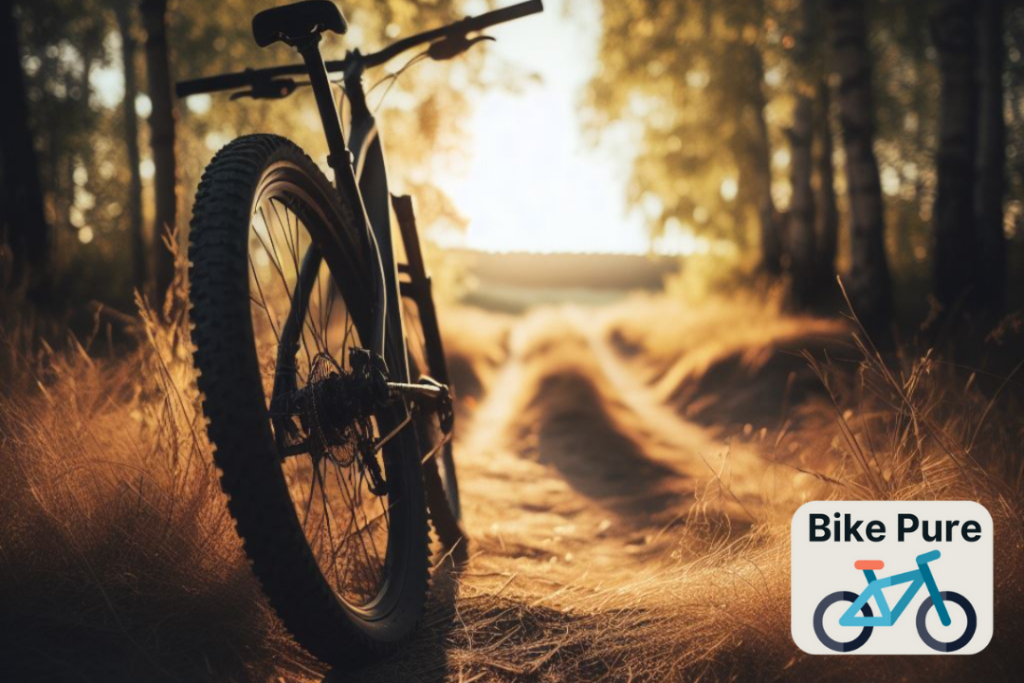
Mountain biking is a popular outdoor activity that can have a significant impact on the environment. As such, many riders are looking for ways to reduce their environmental footprint when it comes to their gear, including their tires. This section will explore some of the environmental considerations that riders should keep in mind when selecting mountain bike tires.
Green Rides: The Push for Sustainable Tire Production
One of the most significant environmental considerations when it comes to mountain bike tires is the production process. Many tire manufacturers are now making efforts to produce tires in a more sustainable way. This includes using eco-friendly materials, reducing waste, and minimizing the use of harmful chemicals.
For example, some manufacturers are now using natural rubber instead of synthetic rubber, which is made from petroleum. Others are using recycled materials in their tire production process, such as recycled rubber and plastic. By choosing tires from environmentally conscious manufacturers, riders can reduce their impact on the environment.
Tire Recycling: Doing Your Part for the Planet
Another environmental consideration when it comes to mountain bike tires is proper disposal. When tires are no longer usable, they should be recycled or disposed of in an environmentally responsible way. This helps to reduce the amount of waste that ends up in landfills and can have a negative impact on the environment.
Fortunately, many tire manufacturers and bike shops now offer tire recycling programs. These programs allow riders to bring their old tires in for recycling, ensuring that they are disposed of properly. Some manufacturers even offer incentives for riders who participate in their recycling programs, such as discounts on new tires.
Conclusion and Recommendations
Summing Up: How to Choose the Best Mountain Bike Tire
Choosing the right mountain bike tire is important for a safe and enjoyable ride. Riders should consider the type of terrain they will be riding on, their level of experience, and personal preference when selecting a tire.
For beginners, wider tires with lower pressure are recommended, as they provide more stability and traction. Intermediate and advanced riders may prefer narrower tires with higher pressure for increased speed and maneuverability.
Riders should also consider the tread pattern of the tire. Knobby tires are ideal for loose and rocky terrain, while smoother tires are better suited for hard-packed trails.
When it comes to tire material, riders can choose between wire bead or folding bead tires. Wire bead tires are more affordable but heavier while folding bead tires are lighter and easier to transport but more expensive.
Personal Picks: Tire Recommendations for Various Conditions
Here are some tire recommendations for various conditions:
- Wet and muddy conditions: Maxxis Minion DHF or Schwalbe Magic Mary
- Loose and rocky terrain: Maxxis High Roller II or Schwalbe Hans Dampf
- Hard-packed trails: Continental Mountain King or Schwalbe Racing Ralph
- All-around tire: Maxxis Ardent or Continental Trail King
Ultimately, the choice of tire comes down to personal preference and riding style. Riders should experiment with different tires to find the one that best suits their needs.
Frequently Asked Questions
What are the factors to consider when choosing mountain bike tires?
When choosing mountain bike tires, there are several factors to consider, including the terrain you will be riding on, the weather conditions, and your riding style. For example, if you will be riding on rocky terrain, you will need a tire with a high level of puncture resistance.
If you will be riding in wet conditions, you will need a tire with good grip and traction. Your riding style will also play a role in determining the type of tire you need. If you are an aggressive rider, you will need a tire with a more aggressive tread pattern.
What are the best mountain bike tires for both road and trail use?
If you plan to ride both on the road and on trails, you will need a tire that can handle both types of terrain. A good option for this type of riding is a tire with a smooth center tread and more aggressive side knobs.
This type of tire will provide good traction on the trails while still allowing for a smooth ride on the road. Some popular options for this type of tire include the Maxxis Ardent and the Schwalbe Nobby Nic.
How do I choose the right tire size for my mountain bike based on my height?
The right tire size for your mountain bike will depend on several factors, including your height, the type of riding you will be doing, and the terrain you will be riding on. Generally, taller riders will need larger tires, while shorter riders will need smaller tires. It is also needed to consider the width of the tire, as wider tires will provide more stability and traction on rough terrain.
What do the numbers on a mountain bike tire mean?
The numbers on a mountain bike tire refer to the tire’s size. The first number represents the tire’s width, while the second number represents the tire’s diameter. For example, a tire with the numbers “26×2.1” would have a width of 2.1 inches and a diameter of 26 inches. It is good to choose the right tire size for your bike to ensure optimal performance and safety.

